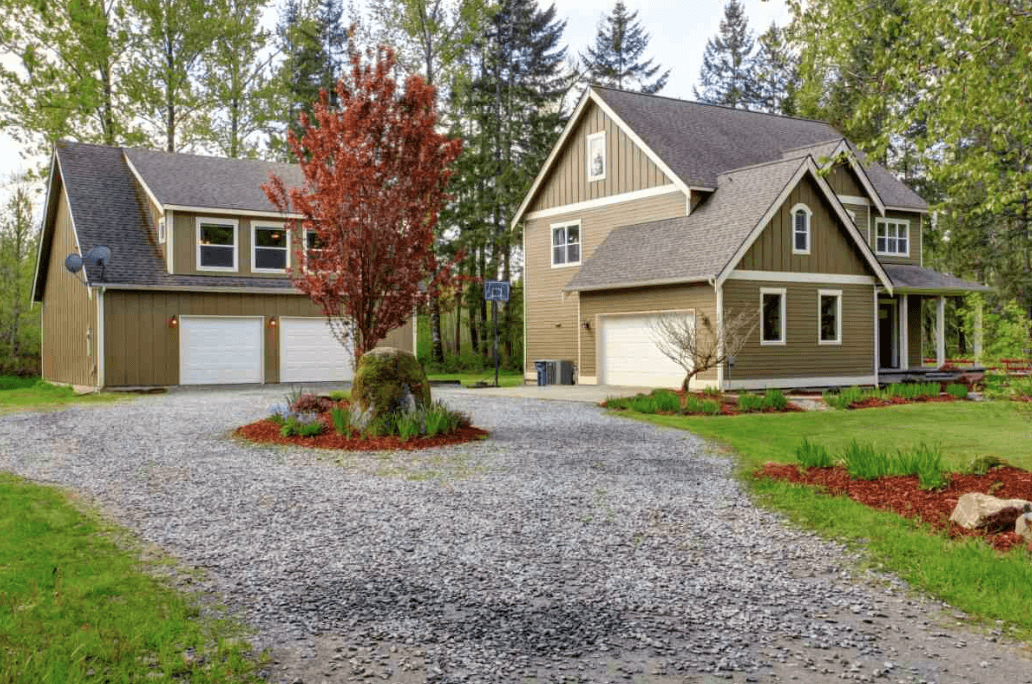72 / 100 Powered by Rank Math SEO A Gravel Driveways is a practical and affordable option that offers natural drainage while adding a rustic aesthetic to your property. It can also be more customizable
A Gravel Driveways is a practical and affordable option that offers natural drainage while adding a rustic aesthetic to your property. It can also be more customizable than other paving options.
Start by clearing the area of any debris, rocks, roots, or other obstructions. Use a shovel, rake, or rented power equipment to level the surface.
Know Your Materials
Gravel driveways are more difficult to plow with a regular snowblower than paved surfaces, and the gravel must be regularly regraded, allowing the displaced material to fall back into place. In addition, the grading must be done carefully to prevent potholes from forming, and a layer of landscaping fabric should be laid before the subbase is put down to help with the drainage of the gravel.
This will help to keep weeds and other plants from growing through the top layer of crushed rock. Additionally, it will reduce the amount of work needed to keep the area free from settling, allowing the surface to last longer. A slight grade away from the garage and home is also recommended to ensure that rainwater drains properly and prevents flooding problems.
Plan Ahead
Gravel is becoming an increasingly popular choice for driveways because it provides a more natural look and can add a rustic charm to a home. It is also cost-effective, durable, and easy to maintain with regular weed and snow removal.
Before any work begins on a gravel driveway, you should survey the site and identify the location of any buried utilities like water or electricity. This will save you a lot of trouble and money in the long run.
Once the area is cleared and ready to be constructed, the general contracting should lay a geotextile membrane before laying a sub-base material. This layer helps to spread the weight of a car across the surface and prevents channels from forming. The sub-base material should then be compacted using a tamping machine or roller.
Be Flexible
Gravel driveways offer a natural aesthetic while also being easy to maintain. They allow rainwater to seep into the ground instead of accumulating, and they can be made from various materials, including recycled materials.
The first step in constructing a gravel driveway is to survey your property and determine the best location and size. After that, you can begin clearing and preparing the area for construction. This typically involves removing vegetation and dirt with a shovel or a rented skid steer and ensuring the ground is leveled.
Once the site has been cleared, you can add rock and gravel layers. It’s important to properly compact each rock layer to ensure your driveway’s durability and strength.
Keep It Clean
Gravel driveways can look shabby quickly if the surface isn’t kept clean. Dirt and leaves should be removed as frequently as possible – especially in Autumn – to avoid them clogging the gravel and potentially blocking drainage.
A weed barrier should also be placed during installation to inhibit weed growth. Occasionally, spraying the weeds with a weed killer designed for use on paths and gravel driveways may be necessary.
Keeping up with these small maintenance tasks can prevent the development of divots and potholes, which can lead to unwanted puddles in wet weather. If stains occur, a special cleaning solution that isn’t too harsh and can protect the stone should be used. If a serious problem does arise, it should be filled in as soon as possible to avoid long-term issues.
Be Honest
Gravel driveways are prone to potholes and dips, especially with regular vehicle traffic. The good news is that these are easy to fill with a shovel, and the best way to prevent them from getting larger is by doing so regularly as soon as they appear. Larger potholes and dips may require regrading, which requires heavy equipment such as a tractor with a bucket or grader to spread and compact fresh gravel.
A benefit of a gravel driveway is its porous surface, which allows rainwater to drain rapidly. It also recharges groundwater, which benefits the environment. In addition, gravel driveways are relatively inexpensive to install. They also require less maintenance than concrete or paving stones.
